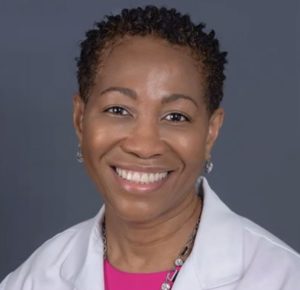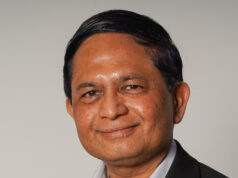Janice Newsome (Emory University Hospital, Atlanta, USA), tells Interventional News that she considers herself “a little bit of a global citizen”. “As interventional radiologists, we believe deeply in what we do, every single day—fundamentally, that it improves the health of the patients we treat. And if I believe that, it is only one step further away to see that good healthcare should be available to everyone, everywhere. So, health equity is crucial, both where high-quality healthcare is already being provided, and even more so in places where it is not available, or accessible,” she says.

Newsome is also categorical that while she is a strong believer in “interventional radiology”, the desire to take these image-guided procedures to benefit patients in need of them, across the world, means that she is open to looking beyond traditional silos and groups to the broad church of available specialists on the ground. Her sights are set on training really anyone in the healthcare team who can be trained to deliver image-guided procedures, well. “As interventional radiologists, we could never put in all the nephrostomy tubes or all the dialysis catheters that are needed for the population in Tanzania or Rwanda. We really need to be able to partner with the nephrologists seeing these patients; we need to be able to partner with the surgeons that may be already placing subclavian catheters with less-than-optimal outcomes, right? Because again, what we want to do is to advance minimally-invasive procedures. Yes, ideally via interventional radiologists, but really at the end, it is to help with the health of that population and not to really dissect the human body in the way that we have in other parts of the Western world to say that only this specialty can do this here, or only that specialty can do that there. Our goal is to train these skills broadly. And yes, we prefer that these procedures are done by interventional radiologists, but I find that the best way is to find out who else is on this journey.”
Minimally-invasive procedures for maximum impact
Newsome points to one of the smallest procedures performed by interventional radiologists—percutaneous abscess drainage—as having a colossal impact. “People in every country need to be able to have percutaneous abscess drainage. We can actually get a needle into any cavity, or any place in the body and try to drain infected fluid from that body cavity. That simple procedure has done so much to change outcomes. It should be available to any doctor who can use simple imaging to put a tube in the body to prevent the patient from needing another operation, needing anaesthesia, or long hospital stays, or even potentially, dying.” Maternal mortality, especially when related to clinically significant postpartum haemorrhage, is another area in which Newsome seeks to move the needle with interventional solutions. “A more advanced procedure that I do think should be available to every woman, everywhere, and will change the percentages of women that die during childbirth, in large part due to bleeding [complications], is embolization. I believe that any doctor, and I hope it is an interventional radiologist, who can safely perform embolization procedures to stop bleeding can help to save a woman’s life during childbirth. I am really passionate about this, because I believe that giving birth should be something that is quite joyous and no one should die while they are trying to bring a life into the world.” Pain palliation procedures are also singled out as being transformative to populations, be they nerve blocks, or ablation procedures to treat pain. Because pain, in some communities, can change the entire livelihood of a family.
For instance, in farming communities, farmers with degenerative conditions such as arthritis may not be able to provide for their families due to pain. “Pain has a huge impact on lives. Procedures that can alleviate pain and help with degenerative changes in the body should be provided around the world,” she says.
A local and global need
It is generally accepted that lower- and middle-income countries would be able to improve the health of their populations with the wider deployment of image-guided procedures. Newsome contends: “I would say that the need is great locally. And the need is great globally. Low- and middle-income countries tend to be where we focus on when we talk about global health. I have decided myself to concentrate my efforts in Sub-Saharan Africa and to concentrate that effort into training programmes where sustainability is more important. So medical tourism is not the name of the game and medical missions are not the name of the game. Instead, how we assess what is going on locally in that area and provide the care that that population needs [is the real focus].”
Outreach efforts and training
There have been several organisations over the years that have recognised this deficit of minimally invasive procedures in several countries in the world. “Organisations such as Rad-Aid, Partners Health, Doctors Without Borders, have all done incredible work. I can talk specifically about a programme called Road to IR. This organisation decided to take a different approach to set up curriculum training programmes in partnership with universities to provide in-depth training for interventional radiology. It was birthed in Tanzania, and although this programme began many years ago, three years ago we graduated our first fellowship-trained interventional radiologist from Tanzania who eventually moved back to Rwanda, where he originally came from. We are replicating the same programme Road to IR Rwanda through the generosity of one of our industry partners, and the Memorandum of Understanding signed between Emory University and the Ministry of Health in Rwanda. Our goal there is to continue to provide minimally-invasive procedures through an educational programme knowing very well that you can give a person a fish and they will eat fish on that day, but if you teach a person to fish, they will eat fish every day.”
Elaborating, she adds: “If we are able to get in at the university level and start training interventional radiologists, then we are going to be able to blanket whole regions and through societies be able to provide examinations to be able to validate this training, so that people can move freely from one country in Africa to the other and still be able to continue their training and then be able to be in practice.”
Newsome acknowledges that the barriers to widespread adoption of image-guided procedures rests in large part on the high cost of disposables, the time of experts, and language and translation barriers. Of course, COVID-19 was particularly disruptive for training programmes abroad. Still, she remains upbeat. “Even with that disruption, I will tell you that we have still survived and even thrived during COVID-19. One of the things it taught all of us is really how connected our world is; it also forced us to embrace other technologies in medicine. Besides the platforms that allow us to speak to each other, procedural telemedicine was birthed during COVID-19. Even in our lab, we were able to broadcast cases initially through what my partners here call ‘ghetto technology’—having one camera look at another camera or my laptop and five iPads in a room, trying to make sure that our learners are still learning, whether these are learners from right here at Emory or learners that are across the pond or ocean. There has also been an acceleration in the industry development of these technologies. We are going to be way better off in terms of procedural telemedicine or procedural education using these platforms going forward. I am excited about it and there are several of them that are already on the horizons being tested right here,” she says.
Smiling at the margins of progress
What encouraging health equity milestones would bring a smile to Newsome’s face? “I believe that in terms of global health equity, I am going to dance when we are able to have interventional procedure lists deployed in low- and middle-income countries in numbers that are suitable for their populations; I am going to dance when maternal mortality is really changed in the USA, considering that I am also right here in Georgia, a state where this is a huge medical issue. And one single thing that I know from a health equity standpoint that will continue to make me smile is when I see women interventionalists/ women proceduralists taking their rightful role in healthcare. When we are able to break down all those barriers in places in the world where medicine and medical care in the form of minimally-invasive procedures are so male-dominated, I will truly laugh. So, when more women are involved in that space, I believe that we are going to see a lot of change—and I will dance long and hard when those numbers start becoming more equal.”













